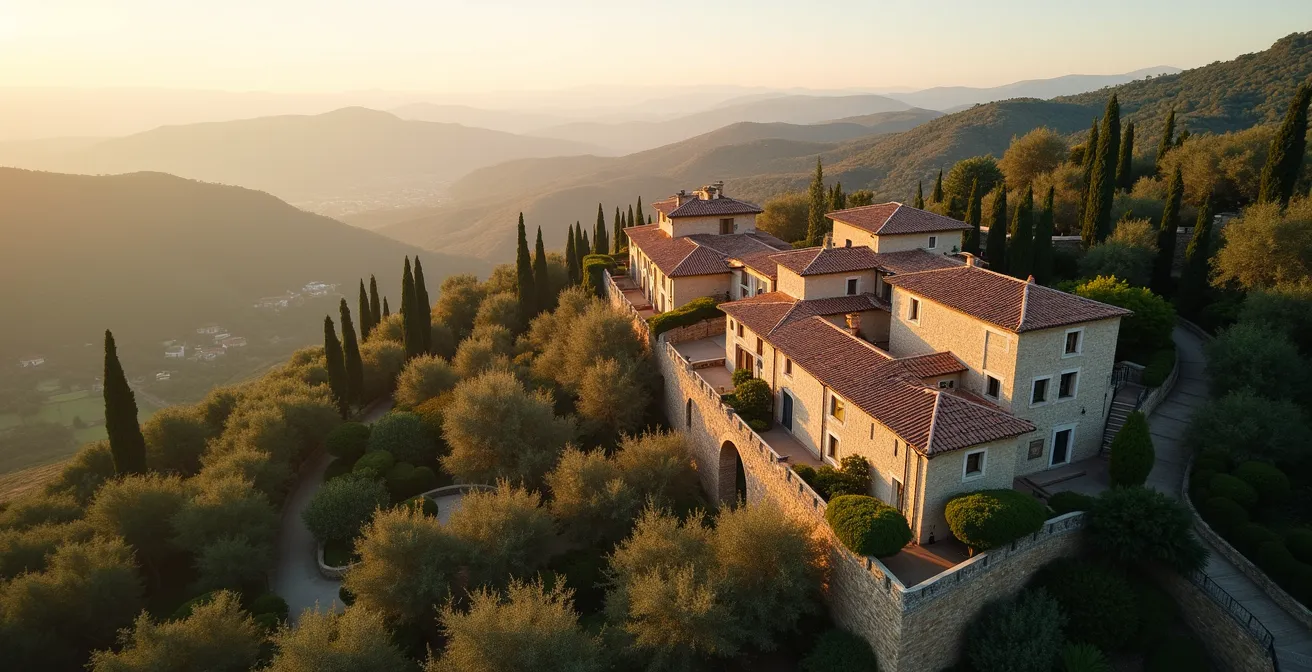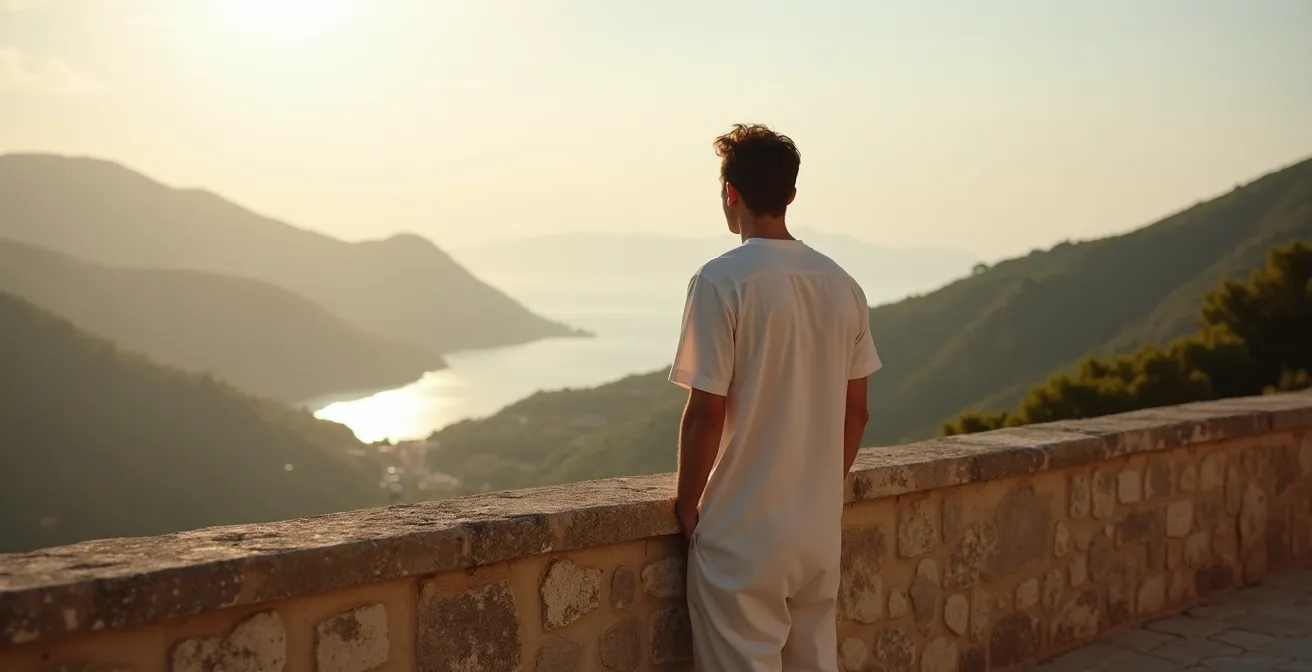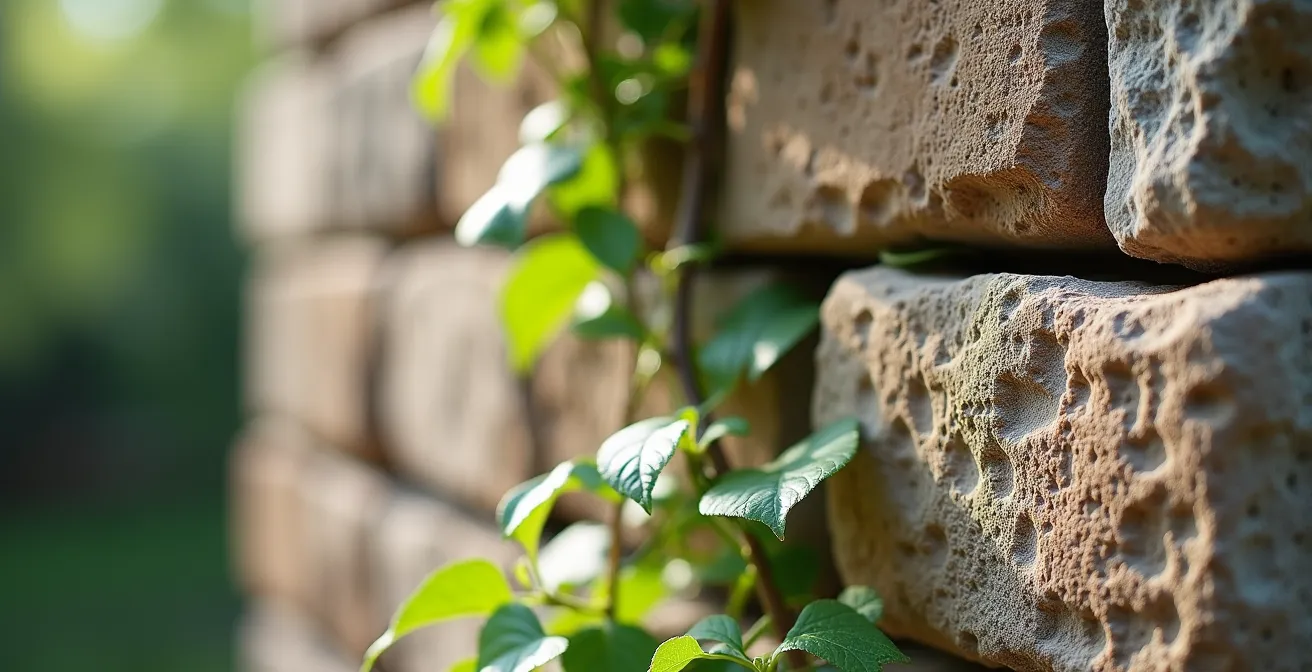
The Côte d’Azur presents travelers with an abundance of villa destinations, yet most promotional content reduces location selection to proximity lists and generic amenities. This superficial approach overlooks the strategic advantages that transform certain locations from simple accommodations into vacation epicenters.
Mougins occupies a unique position in this landscape. Rather than competing on beach frontage or celebrity associations, this medieval hilltop village functions as a calculated hub that optimizes access, climate, cultural authenticity, and temporal flexibility. Understanding villa rental in Mougins requires examining geographical positioning theory, microclimate dynamics, architectural terroir, and the economic structures that enable genuine village integration.
This analysis moves beyond standard villa marketing to explore how Mougins transforms geographical and cultural advantages into measurable experiential value, creating a strategic vacation epicenter rather than merely another picturesque location.
Mougins villa holidays: strategic advantages decoded
- Mougins’ 260-meter elevation creates a multi-directional access hub optimizing coast, mountain, and cultural destinations within 30-minute radius
- Mid-altitude positioning generates microclimate advantages with cooler evenings and extended shoulder seasons versus coastal properties
- Provençal architectural heritage translates into authentic villa designs impossible in modern coastal developments
- Year-round village commerce enables genuine local integration and privileged access to artisan relationships
- Temporal flexibility across daily rhythms and seasonal patterns maximizes value per vacation day
The Strategic Geography That Redefines Riviera Access
Most villa marketing reduces location to distance measurements from airports and beaches. This approach misses the strategic positioning theory that makes certain locations function as optimized hubs rather than isolated destinations. Mougins demonstrates this principle through its calculated geometric positioning between coast, mountains, and cultural centers.
The village sits at a sweet spot within a 30-minute radius of dramatically different experiences. Mediterranean beaches, Alpine foothills, perfume capital Grasse, Italian border towns, and the cultural infrastructure of Cannes, Antibes, and Nice all fall within minimal travel friction distances. This creates what urban planners call a “radius optimization”—a center point that maximizes directional options while minimizing cumulative travel time.
Elevation plays a crucial role in this strategic advantage. The medieval village’s position reflects centuries of defensive calculation. Historical records reveal how this positioning created military value that translates directly into contemporary vacation advantages. Built at the peak’s summit, the fortified settlement gained protection through its spiral form, ramparts, and three gates, maintaining strategic dominance despite numerous attacks throughout its history, according to architectural heritage documentation.

This same 260-meter altitude now provides villa guests with both literal and psychological elevation. The visual panorama creates a sense of perspective impossible from sea-level properties, while the psychological positioning establishes what behavioral researchers call “base camp advantage”—the feeling of returning to a refuge above the activity rather than remaining immersed in coastal density.
The directional flexibility this positioning enables transforms vacation rhythms. Morning excursions to coastal markets, afternoon explorations of mountain villages, evening returns to hilltop tranquility—this multi-axis access allows guests to radiate toward diverse experiences without the commitment anxiety that comes with single-context locations. The travel distance analysis demonstrates this strategic advantage clearly.
| Destination | Distance/Time | Type of Access |
|---|---|---|
| Cannes Beaches | 15 minutes | Coastal Access |
| Grasse | 8 kilometers | Cultural Heritage |
| Nice Airport | 30 minutes | International Hub |
| Italian Border | 60 minutes | Cross-border |
This geographical positioning creates what economists call “optionality value”—the premium associated with maintaining maximum flexibility without foreclosing future choices. Villa guests preserve the option to pivot daily plans based on weather, energy levels, or spontaneous opportunities rather than committing to a single vacation mode dictated by property location.
Microclimate Dynamics That Luxury Villas Amplify
Weather information for Riviera destinations typically defaults to generic “Mediterranean climate” descriptions. This oversimplification obscures the significant microclimate variations that mid-altitude positioning creates. Mougins benefits from topographical advantages that generate measurable comfort improvements over purely coastal alternatives.
The elevation and inland positioning create temperature moderation effects particularly valuable during summer peaks. While coastal Cannes experiences July and August heat intensified by humidity and solar reflection from water and concrete, Mougins maintains temperatures several degrees cooler while preserving sunshine hours. Climate analysis shows the village experiences an 38°F to 81°F annual temperature range providing year-round comfort, with the moderate fluctuation preventing both winter extremes and summer oppression.
This isn’t merely about thermometer readings. The microclimate advantage translates directly into how villa architecture can leverage natural conditions. Properties designed with south-facing terraces, cross-ventilation corridors, and outdoor living spaces exploit the predictable air movement patterns created by the village’s topographical position between coast and mountains.
Evening comfort particularly differentiates the Mougins experience. Coastal properties that feel pleasant during daylight often become uncomfortably humid after sunset, with warm air trapped by urban density. Mougins benefits from the thermal dynamics of elevation—heat dissipates efficiently after dark, creating the terrace dining conditions that define Provençal lifestyle imagery but often prove elusive in reality at sea level.
Mougins has kept the quality of its environment intact, and offers visitors, from the height of 260 metres, a panoramic view
– Provence Web, Provence Tourism Guide
The climate performance metrics reveal why spring and autumn become extended prime seasons in Mougins while coastal areas oscillate between too hot and too cool. The seasonal optimization data demonstrates this advantage clearly.
| Climate Factor | Summer Peak | Winter Average | Annual Benefit |
|---|---|---|---|
| Temperature | 27°C (August) | 12°C (February) | Moderate range |
| Sunshine Hours | 10.9 hours (July) | 4.6 hours (Dec) | High summer exposure |
| Humidity | 78% (May) | 72% (February) | Relatively stable |
Luxury villa architecture in Mougins responds to these microclimate conditions through design elements that would be unnecessary or counterproductive in other locations. Stone construction with high thermal mass moderates daily temperature swings. Courtyard configurations create protected outdoor spaces that capture warmth in spring and autumn while providing shade in summer. Natural ventilation systems exploit predictable air currents rather than requiring constant air conditioning.
These architectural responses transform climate from a passive background condition into an active component of the luxury experience. The microclimate advantages that Mougins’ positioning creates become tangible through villa designs that amplify natural comfort rather than compensating for environmental challenges.
Villa Architecture as Cultural Translation of Terroir
The concept of terroir—how geography and tradition combine to create unique characteristics—typically applies to wine and agriculture. Mougins villas demonstrate how this principle extends to architecture, where medieval village heritage and Provençal building traditions create authenticity that newer coastal developments cannot replicate regardless of budget.
Local materials establish the foundation of this architectural terroir. Limestone quarried from regional sources creates walls with specific thermal properties, acoustic qualities, and visual textures that connect contemporary villas to centuries of building tradition. The stone absorbs heat during the day and releases it gradually after sunset, providing natural climate moderation that mechanical systems can supplement but never fully replace.

Terracotta roof tiles, exposed wooden beams, and traditional shutters aren’t merely aesthetic choices—they represent construction techniques refined over generations to address specific regional climate challenges. Modern luxury villas in Mougins preserve these elements not through nostalgic reproduction but through contemporary interpretation that maintains functional advantages while incorporating current comfort standards.
The spatial philosophy of Provençal architecture creates experiences impossible in properties designed purely around contemporary luxury conventions. Indoor-outdoor flow isn’t achieved through expensive glass walls that erase boundaries, but through transitional spaces—covered terraces, enclosed courtyards, shaded loggias—that create gradients between protected and exposed environments. This approach reflects centuries of adaptation to Mediterranean climate patterns.
Garden integration follows agricultural heritage rather than purely ornamental landscaping principles. Olive groves, cypress windbreaks, lavender borders, and herb gardens connect villa grounds to the working landscape visible across surrounding hillsides. This creates visual and olfactory continuity with the region’s character rather than the disconnected tropical plantings common in resort developments. For those evaluating different rental options in France, this architectural authenticity represents a key differentiator.
The restored bastide phenomenon particularly demonstrates Mougins’ architectural advantage. These traditional Provençal country houses, originally built as rural retreats for wealthy families, exist in exceptional inventory within the Mougins area. Modern renovations preserve structural elements, proportional relationships, and material palettes while introducing contemporary amenities, creating properties that embody both heritage and luxury.
This architectural terroir creates experiential authenticity that coastal villas designed from scratch cannot achieve. Sleeping in a bedroom with stone walls quarried locally three centuries ago, dining under timber beams hand-hewn by traditional methods, walking through gardens laid out according to Provençal agricultural principles—these experiences connect guests to place in ways that no amount of five-star amenities can replicate in newer constructions.
The Insider Access Economy of Village Integration
Villa isolation represents a paradox in luxury vacation planning. Properties marketed on privacy and exclusivity often leave guests disconnected from authentic local experiences, creating a gilded cage effect. Mougins’ unique economic and social structure solves this paradox through compact geography and year-round residential community that enables genuine village participation rather than tourist observation.
The residential-commercial balance distinguishes Mougins from seasonal resort towns. While coastal destinations experience dramatic population swings that force businesses into transient tourist service models, Mougins maintains year-round village life supported by permanent residents. This sustains authentic boulangeries, butchers, wine merchants, produce markets, and artisan shops that serve local needs first and welcome visitors second—a crucial distinction in service quality and authenticity.
Mougins has long been known as a gastronomic stronghold in the south of France. The town has attracted world-famous chefs and food lovers for decades and has a reputation for being home to some of the finest restaurants in the region. Many of these restaurants are recognized with Michelin stars.
– CityXee, Mougins Village Guide
This gastronomic infrastructure creates relationship economics impossible in transient environments. Villa guests staying multiple weeks develop recognition at the morning market, establish preferences with the local boulangerie, receive recommendations from wine merchants who remember previous conversations. These micro-relationships transform daily routines from transactions into participatory village life.
The village’s artistic heritage adds another integration dimension. The community’s historical attraction to creative figures established cultural infrastructure that persists today. Multiple galleries, studios, and artistic events throughout the year create opportunities for engagement beyond typical tourist activities.
Historically, the old village has been a hub for artists. Most notably, Pablo Picasso lived here for the last 12 years of his life until his death in 1973. Cesare Baldaccini, Jean Cocteau, Yves Klein, Yves Saint Laurent, Christian Dior and many other artists are known to have visited and drawn inspiration from Mougins.
– The Republic of Rose, Mougins Cultural History
Walking proximity enables this integration in ways car-dependent coastal villas cannot replicate. The medieval village’s compact design means villa guests can stroll to authentic commercial and cultural life, creating daily rhythms different from isolated properties requiring vehicular expeditions for every activity. This accessibility without sacrificing villa privacy represents optimal positioning.
Villa concierge services leverage established local relationships to provide insider access that transcends standard tourist channels. Securing reservations at Michelin-starred restaurants, arranging private chef experiences with local culinary talent, accessing seasonal artisan products, organizing gallery previews—these privileges emerge from integration into village social and commercial networks rather than generic concierge databases.
Essential village integration steps for villa guests
- Visit the local morning market at Place Commandant Lamy for fresh produce and artisanal products
- Establish relationships with local boulangeries and wine merchants through regular visits
- Book tables at Michelin-starred restaurants through villa concierge connections
- Explore the 20+ art galleries and studios throughout the village on foot
- Attend seasonal festivals like Saint-Barthélémy celebration in late August
This insider access economy creates a “regular” advantage that villa isolation in resort areas cannot provide. The ability to participate in authentic village life while maintaining private villa sanctuary represents a privileged position unavailable in destinations lacking Mougins’ specific residential-commercial-cultural balance.
Temporal Flexibility Across Seasonal and Daily Rhythms
Most villa marketing ignores temporal strategy, presenting destinations as perpetually optimal regardless of when guests visit or how they structure daily activities. This oversimplification costs travelers significant value. Mougins’ positioning creates temporal flexibility across both seasonal patterns and daily rhythms that maximizes experiential quality relative to cost and logistics.
Seasonal viability extends far beyond the compressed July-August peak that dominates coastal villa calendars. The microclimate advantages previously discussed combine with Mougins’ geographical positioning to create extended shoulder seasons offering superior weather-to-crowd ratios. May, June, September, and October deliver optimal temperatures for active exploration without the accommodation premiums, restaurant waits, and traffic congestion of peak summer.
The climate data reveals exceptional consistency that enables year-round planning. Research shows Mougins benefits from 3,403 annual sunshine hours enabling extended seasonal flexibility, with this solar exposure distributed across months in ways that make spring and autumn particularly attractive for villa stays focused on cultural activities, culinary experiences, and moderate outdoor pursuits.
| Season | Temperature Range | Key Advantage | Best For |
|---|---|---|---|
| April-May | 7°C to 22°C | Perfect weather, fewer crowds | Active exploration |
| June-September | 15°C to 30°C | Beach season access | Family holidays |
| October | 11°C to 21°C | Mild weather, harvest season | Cultural experiences |
Event calendar optimization demonstrates another temporal advantage. Mougins’ proximity to major Côte d’Azur events—Cannes Film Festival, Monaco Grand Prix, Nice Carnival, Grasse jasmine harvest—enables participation without the accommodation price surges and logistical chaos that event locations experience. Villa guests enjoy convenient access while maintaining distance from the density and premium costs concentrated at event epicenters.
Daily rhythm flexibility represents perhaps the most underappreciated temporal advantage. Coastal villas commit guests to beach-centric days with cultural activities requiring significant travel. Mountain properties offer hiking and scenery but limited dining and entertainment options. Mougins’ hub positioning enables mixing activity types within single days—morning coastal markets, afternoon mountain village exploration, evening Michelin dining—without the travel friction or daily commitment negotiations that single-context locations impose.

This daily flexibility proves particularly valuable for multi-generational groups where preferences diverge. Teenagers prioritize beach time, adults seek cultural enrichment, elderly relatives prefer relaxed village atmosphere. Properties in single-context locations force daily compromise negotiations or group splitting with complex logistics. Mougins enables all preferences from one base, with different family members pursuing separate morning activities and reuniting for villa-based afternoons and evenings.
The temporal flexibility advantages—extended seasonal viability, event proximity without chaos, daily rhythm variety, multi-generational accommodation—compound to create higher value per vacation day than destinations offering singular experiences or compressed viable seasons. Those considering broader Mediterranean options might compare these advantages to other premium destinations, such as exploring details about romantic escapes through resources on luxury villa experiences in neighboring destinations.
Key takeaways
- Strategic 260-meter elevation optimizes multi-directional access to coast, mountains, and cultural destinations within 30-minute radius
- Microclimate advantages from mid-altitude positioning deliver cooler evenings and extended shoulder seasons versus coastal properties
- Provençal architectural terroir creates authenticity through local materials and spatial traditions impossible in modern coastal developments
- Year-round village commerce enables genuine integration with artisan relationships and Michelin dining access through established networks
- Temporal flexibility across seasons and daily rhythms maximizes experiential value and accommodates multi-generational preferences from single base
Conclusion
Mougins transcends conventional villa destination criteria through strategic advantages that standard marketing overlooks. The geographical positioning creates a calculated hub rather than a proximate location, the microclimate delivers measurable comfort improvements, the architectural heritage provides authenticity impossible in newer developments, the village integration enables insider access, and the temporal flexibility maximizes value across seasons and daily rhythms.
These dimensions transform Mougins from a simple location into a strategic vacation epicenter where geographical, cultural, and temporal advantages compound into experiential value unavailable from destinations competing solely on beach frontage or celebrity associations. Understanding these strategic advantages enables informed evaluation beyond superficial amenity lists.
The villa holiday decision ultimately centers on maximizing experiential quality relative to investment. Mougins delivers this through positioning advantages that create optionality, flexibility, and authentic integration while maintaining the privacy and luxury that define premium villa experiences.
Frequently Asked Questions About Mougins Villas
What makes Mougins’ location strategically superior to beachfront villa destinations?
Mougins functions as an optimized hub positioned at 260 meters elevation, creating 30-minute access to diverse experiences including Mediterranean beaches, Alpine foothills, cultural centers, and the Italian border. This multi-directional flexibility allows guests to vary daily activities without the commitment to single-context vacation modes that beachfront locations impose, while the elevation provides both panoramic perspectives and psychological separation from coastal density.
How does Mougins’ microclimate differ from coastal Côte d’Azur properties?
The mid-altitude inland positioning creates temperature moderation effects, particularly during summer when Mougins maintains readings several degrees cooler than coastal areas while preserving sunshine hours. Evening comfort significantly improves as heat dissipates efficiently after sunset, enabling the terrace dining experiences that coastal properties often cannot deliver due to trapped humidity. The moderate climate also extends viable shoulder seasons into May, June, September, and October with optimal weather-to-crowd ratios.
What defines the architectural authenticity of Mougins villas?
Mougins villas embody Provençal architectural terroir through local limestone construction, traditional terracotta and timber elements, and spatial designs refined over centuries for Mediterranean climate conditions. Many properties are restored bastides that preserve structural heritage while incorporating contemporary luxury amenities. This creates experiential authenticity through materials, proportions, and indoor-outdoor flow philosophies impossible to replicate in modern coastal developments built from scratch.
How can villa guests access authentic village life rather than remaining isolated?
Mougins maintains year-round residential commerce including authentic markets, artisan shops, and Michelin-starred restaurants serving local community first. The compact medieval village design enables walking access to this commercial and cultural infrastructure, while multi-week stays allow guests to develop recognition and relationships with merchants, restaurateurs, and gallery owners. Villa concierge services leverage established local networks to secure privileged access to dining, culinary experiences, and seasonal artisan products unavailable through standard tourist channels.